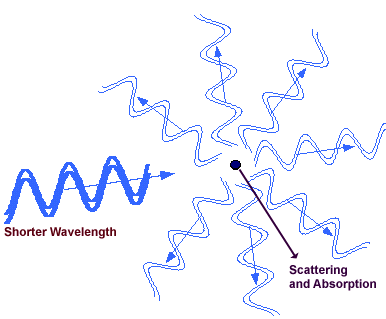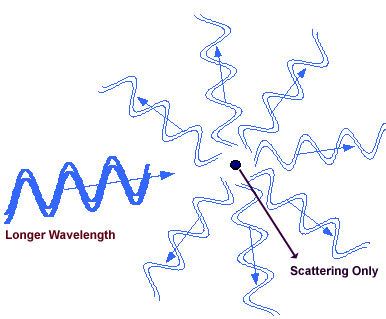|
Effects of Wavelength
on the ability to detect an object
The factors which govern the choice of a
wavelength to be used in a particular radar
include its sensitivity, which is its ability
to detect weak targets at long range, the radar's ability to resolve
small features, the types of targets to be studied, and the effects
of the intervening atmosphere on the transmitted energy.
Other factors also must be considered such as the radar's size, weight
and cost. Most weather radars have wavelengths that range between 0.8
centimeters (cm)
and 10.0 cm.
Generally short
wavelengths mean smaller and less expensive
equipment.

Short wavelength radars are more effective in detecting small particles
such as cloud droplets and drizzle drops. However, the
short wavelength electromagnetic
energy is also partially absorbed by these same particles (a process called
attenuation). This makes it difficult to accurately measure the
intensity of back-scattered energy for more distant targets that lie beyond
the range of closer targets.

The main advantage of using
longer wavelengths is that absorption by the
intervening particles is drastically reduced. This means that a
distant thunderstorm behind a closer thunderstorm will appear on the radar
screen with its proper intensity. Since
detecting severe weather is one of
the most important missions of operational radars, such as the National
Weather Service's WSR-88D Doppler radars,
these radars typically use a
long wavelength.

signal scattering
|
|

ray paths
|
|



